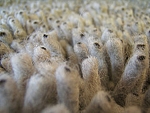
-----------------
Free Report Reveals How

Download your coupons and save on carpet cleaning and other services.
![]() Request your carpet care guide and learn how your capeting and flooring can last for years to come. Download it now!
Request your carpet care guide and learn how your capeting and flooring can last for years to come. Download it now!

Before we can clean your carpets, we'll determine the kind of fiber content it contains. This is critical to a quality, long lasting carpet cleaning.
Carpets come in a variety of fiber types today. Which fiber cleans best? Is there a “best” fiber? This article will explore the top three carpet fibers and their characteristics as they relate to cleaning and maintenance. Use this information in your search for carpet, and in understanding maintenance issues of existing carpets.
There are many fiber types used in carpet manufacturing, however, for the purpose of this article we will focus on the three main players. These will also be the ones you are most familiar with:
Olefin (also called polypropylene) has become extremely popular in recent years. The first attraction to olefin is the price. Olefin is generally less expensive than other fibers although not always. The second appeal is that the fiber will not absorb any liquid. If you were to take a yarn from an olefin carpet and place it in a glass of water, the fiber would float on the top of the water.
Nylon and wool would not, since each would absorb a certain amount of water. The point is that when something is spilled on olefin carpet, it will not be absorbed into the fiber. The value is that permanent staining from spillage is reduced. In addition, olefin carpets are solution dyed, which means that the color is introduced to the molten plastic before the fiber is made.
This characteristic can also present unique cleaning challenges. Sometimes when spillage occurs, it runs down the side of the yarn into the backing of the carpeting. Many times this can cause wicking problems as the spill gets trapped in the baking of the carpet, and is not effectively removed. Therefore, it continues to wick to the surface over time. In addition, if an inexperienced carpet cleaner leaves too much liquid in the carpet after cleaning, it simply slides down to the backing of the carpet with the soils. As the carpet dries, the water wicks the soil to the surface.
The second challenge with olefin is a characteristic that is often overlooked: Olefin fibers are less resilient than others. What that means in plain and simple terms is that when a fiber is crushed, it doesn’t “bounce back” as well as other fibers. It also “scratches” very easily. A very common occurrence with olefin installations is that the traffic areas may begin to look dingy or worn. In fact what has happened is that the fibers have been scratched from foot traffic. If you can imagine a plastic toy that has a scratch on it, there is nothing you can do to remove that scratch. It’s permanent. The same is true of an olefin fiber - once it is scratched, nothing can be done to correct it. In a high traffic area, the carpet may appear completely different than the edges against the wall.
The third interesting characteristic of olefin is that it is an “oil loving” fiber. In other words, in the same way it repels water-based soil, it absorbs and accepts oil based soils. That means spots from lamp oil, lotion, body oils, food oils, ets, are very difficult to remove form olefin carpets.. This can be especially important just outside a kitchen area, for example. Our company uses special cleaning agents that have been manufactured for effectively cleaning olefin carpets.
Nylon has definitely been the most widely used fiber in the residential environment, and for good reason. Nylon is very resilient, has good dry soil resistance and doesn’t present as many cleaning challenges.
Nylon is also very resistant to spillage. Since most residential nylon is not solution dyed but dyed after the carpet is made, it is not impossible to stain. However, if the spot is attended to in a timely manner, one can expect excellent spot removal results. Residential nylon carpets are also treated with a fluorochemical such as 3M Scotchgard, or DuPont Teflon which helps tremendously with dry soil resistance and stain resistance.
Wool is more resistant to foot traffic than any other fiber. This is the reason that you see Oriental rugs that have lasted for so many generations. Wool hides dry soil naturally and is not adversely affected by it for quite some time. Another wonderful aspect of wool is that it is a great insulator. In the winter your home will be warmer inside and in the summer it will be cooler. However, the cheaper wool stains easily and may not be the choice where children and pets are present.
The first step is to perform a free carpet audit. This inspection process will determine the type of cleaning method that is most suitable for your home. From the results, together we can determine the best techniques to return your carpet to peak condition.
To get started, call 734-878-3702 to schedule your appointment online today.